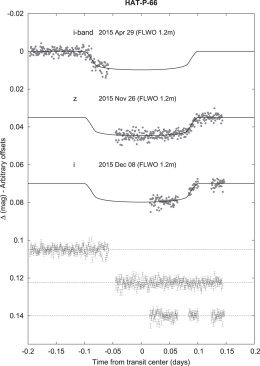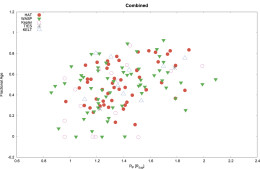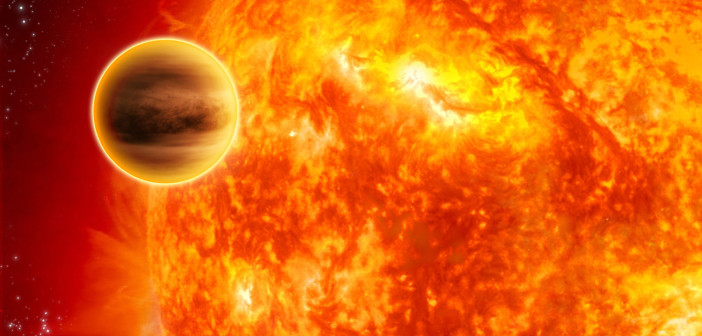Two new, large gas-giant exoplanets have been discovered orbiting close to their host stars. A recent study examining these planets — and others like them — may help us to better understand what happens to close-in hot Jupiters as their host stars reach the end of their main-sequence lives.
Oversized Giants

Unbinned transit light curves for HAT-P-65b. [Adapted from Hartman et al. 2016]
These two planets, discovered using the Hungarian-made Automated Telescope Network (HATNet) in Arizona and Hawaii, mark the latest in an ever-growing sample of gas-giant exoplanets with radii larger than expected based on theoretical planetary structure models.
What causes this discrepancy? Did the planets just fail to contract to the expected size when they were initially formed, or were they reinflated later in their lifetimes? If the latter, how? These are questions that scientists are only now starting to be able to address using statistics of the sample of close-in, transiting planets.

Unbinned transit light curves for HAT-P-66b. [Hartman et al. 2016]
Exploring Other Planets
Led by Joel Hartman (Princeton University), the team that discovered HAT-P-65b and HAT-P-66b has examined these planets’ observed parameters and those of dozens of other known close-in, transiting exoplanets discovered with a variety of transiting exoplanet missions: HAT, WASP, Kepler, TrES, and KELT. Hartman and collaborators used this sample to draw conclusions about what causes some of these planets to have such large radii.
The team found that there is a statistically significant correlation between the radii of close-in giant planets and the fractional ages of their host stars (i.e., the star’s age divided by its full expected lifetime). The two newly discovered hot Jupiters with inflated radii, for instance, are orbiting stars that are roughly 84% and 83% through their life spans and are approaching the main-sequence turnoff point.
Late-Life Reinflation

Fractional age of the host stars of close-in transiting exoplanets vs. the planet’s radius. There is a statistically significant correlation between age and planet radius. [Adapted from Hartman et al. 2016]
Based on these results, we would expect to continue to find hot Jupiters with inflated radii primarily orbiting closely around older stars. Conversely, close-in giant planets around younger stars should primarily have non-inflated radii. As we continue to build our observational sample of transiting hot Jupiters in the future, we will be able to see how this model holds up.
Citation
J. D. Hartman et al 2016 AJ 152 182. doi:10.3847/0004-6256/152/6/182

6 Comments
Pingback: inflating giant planets
Pingback: Giganti gassosi oversize | Accademia delle Stelle
Pingback: ¿Cómo encontrar exoplanetas y ‘escuchar’ a sus estrellas con TESS? | Astrobites en español
Pingback: Heating up the guts of gas giants | astrobites
Pingback: Heating Up the Guts of Gas Giants
Pingback: How to find exoplanets and ‘listen’ to their stars with TESS | astrobites